How to Optimize Your WordPress Website Design for Maximum Performance
WordPress is one of the most popular site-building and content management systems available today. Even if you’re not a web developer, you can easily create and manage a WordPress website. But what if you want to take your WordPress website to the next level? How can you optimize your WordPress website design for maximum performance?
Here are some tips:
1. Use a lightweight theme.
Your WordPress theme plays a big role in your site’s performance. A lightweight theme will load faster and use less server resources than a heavyweight theme. There are many great lightweight themes available for free or for a reasonable price.
2. Install a caching plugin.
A caching plugin speeds up your website by creating cached versions of your pages and posts. This means that when a visitor requests a page, the server doesn’t have to generate the entire page from scratch – it can serve the cached version instead. This can reduce server load and significantly improve page load times.
3. Use a content delivery network (CDN).
A CDN is a network of servers that deliver content to visitors based on their geographic location. Using a CDN can improve your site’s performance, especially if you have visitors from all over the world.
4. Optimize your images.
Images are often the biggest bottleneck on a website. They can take up a lot of space and take longer to download than other types of files. You can optimize your images for performance by using a tool like WP Smush. It will automatically compress your images without losing quality.
5. Minimize external HTTP requests.
Each time your browser loads a page, it has to request files from external sources like Google Analytics and social media widgets. These requests add up and can slow down your website. You can minimize external HTTP requests by loading files locally or using a plugin like Jetpack.
6. Use a content management system (CMS).
A CMS like WordPress stores your content in a database and generates pages on the fly when visitors request them. This is much faster than loading static HTML files from your server. WordPress is already a great CMS, but you can further improve its performance by using caching and CDN plugins as well as optimizing your images.
Getting Started with WordPress Website Design
WordPress is a content management system (CMS) that enables you to create a website or blog from scratch, or to improve an existing website. In this guide, we will cover everything you need to know in order to create a WordPress website or blog.
What is WordPress?
WordPress is a content management system (CMS), which is a software that helps you create, manage, and publish content. WordPress is free and open source software released under the GPL.
Why Use WordPress?
WordPress powers over 30% of the internet. This means that one in four websites that you visit are likely powered by WordPress. WordPress is incredibly versatile and can be used for almost any type of website or blog, including:
-Business websites
-E-commerce websites
-Portfolios
-Blogs
WordPress is also used by some of the world’s largest companies, including Facebook, Google, Sony, and Disney.
How to Use WordPress?
WordPress is pretty easy to use and doesn’t require any programming knowledge. With WordPress, you can create almost any type of website or blog that you can imagine.
If you want to create a WordPress website or blog, there are two ways to do it:
1.Install WordPress on your own web hosting account.
2.Create a free WordPress website or blog on WordPress.com.
Installing WordPress on Your Own Web Hosting Account
If you want full control over your WordPress website or blog, then you will need to install WordPress on your own web hosting account.
To do this, you will first need to purchase web hosting and a domain name. Once you have done that, you can install WordPress on your web hosting account using the one-click installer tool in your hosting account control panel.
Creating a Free WordPress Website or Blog on WordPress.com
If you don’t want to bother with installing and configuring WordPress yourself, then you can create a free WordPress website or blog on WordPress.com.
With this option, you don’t need to purchase web hosting or a domain name. WordPress.com will provide you with a free subdomain (yourwebsite.wordpress.com) and give you access to a basic set of WordPress features.
If you want to use a custom domain name (like yourname.com), then you will need to upgrade to a paid plan.
Things You Need to Know Before You Start
Before you start creating your WordPress website or blog, there are a few things you need to know:
1.WordPress is a content management system (CMS) that enables you to create a website or blog from scratch, or to improve an existing website.
2.WordPress is free and open source software released under the GPL.
3.You can use WordPress to create almost any type of website or blog.
4.If you want full control over your WordPress website or blog, then you will need to install WordPress on your own web hosting account.
5.If you don’t want to bother with installing and configuring WordPress yourself, then you can create a free WordPress website or blog on WordPress.com.
6.Before you start creating your WordPress website or blog, there are a few things you need to know.
Researching and Choosing Design Elements
WordPress website design can be a daunting task, especially if you’re starting from scratch. There are so many different design elements to consider, from the overall layout to the individual color and font choices. And then you have to think about how all of those elements will come together to create a cohesive, visually appealing website.
If you’re feeling overwhelmed, don’t worry. The key is to take things one step at a time. Begin by doing some research to get an idea of the different design elements that are available to you. Once you have a good understanding of the options, you can start narrowing down your choices until you find the perfect combination for your WordPress website.
One of the best places to start your research is with WordPress’s own Theme Directory. Here you’ll find thousands of themes, all of which come with their own unique set of design features. Browse through the directory and take note of any themes that catch your eye.
Next, head over to Google and do a search for “WordPress themes”. You’ll be presented with an endless array of results, so it’s important to be selective about the websites you visit. Look for reputable sources that offer high-quality themes. Once you’ve found a few good candidates, take some time to explore each one in detail.
As you’re looking at different themes, pay close attention to the design elements that are used. Note the overall layout, the color scheme, the font choices, and any other details that stand out. Make a list of the elements that you like best and start thinking about how you could use them on your own website.
Once you’ve done your research and identified some potential design elements, it’s time to start making some decisions. Begin by thinking about the overall look and feel you want your website to have. Do you want it to be sleek and modern, or warm and inviting? Do you want to use lots of color, or stick to a more muted palette?
Once you’ve settled on a general direction, you can start narrowing down your choices of themes and plugins. If you’re not sure where to start, take a look at your list of favorite design elements and see if any of the themes you’re considering include them.
Finally, don’t forget to consider the user experience when choosing your design elements. Remember that your website should be easy to navigate and understand. Avoid cluttered layouts and confusing navigation menus. Stick to simple, clean designs that will make it easy for your visitors to find what they’re looking for.
When it comes to WordPress website design, there are endless possibilities. By taking the time to do your research and identify your favorite design elements, you can create a website that is truly unique and reflective of your personal style.
Improving WordPress Site Performance Through Optimization
WordPress website design is not something to take lightly. It is important to have a well-designed website that is easy to use and navigate. A well-designed website will help you improve your site performance and make it more user-friendly. Below are some tips on how to optimize your WordPress website design:
1. Use a content delivery network (CDN).
A CDN can help you improve your website speed and performance by caching your static files (CSS, JavaScript, and images) on their servers and delivering them to your visitors from the closest server location. This can help reduce server load time and improve page load times.
2. Optimize your images.
Images can take up a lot of space and can slow down your website. Make sure to optimize your images for the web by reducing their file size without compromising quality. You can do this using an image compression tool like TinyPNG.
3. minify your CSS and JavaScript files.
Minifying your CSS and JavaScript files can help reduce file size and improve website performance. To minify your CSS, you can use a tool like MinifyCSS. For JavaScript, you can use a tool like JSMIN.
4. Use a caching plugin.
Caching can help improve website performance by caching static files and eliminating the need to load these files from the server each time a page is accessed. A popular WordPress caching plugin is W3 Total Cache.
5. Enable gzip compression.
Gzip compression can help reduce the size of your HTML, CSS, and JavaScript files by up to 70%. This can help improve page load times and reduce server load time. To enable gzip compression, you can add the following code to your .htaccess file:
AddOutputFilterByType DEFLATE text/plain
AddOutputFilterByType DEFLATE text/html
AddOutputFilterByType DEFLATE text/xml
AddOutputFilterByType DEFLATE text/css
AddOutputFilterByType DEFLATE application/xml
AddOutputFilterByType DEFLATE application/xhtml+xml
AddOutputFilterByType DEFLATE application/rss+xml
AddOutputFilterByType DEFLATE application/javascript
AddOutputFilterByType DEFLATE application/x-javascript
6. Use a content management system (CMS).
A CMS can help you manage your website content more effectively and efficiently. A popular WordPress CMS is WordPress itself. Other popular CMS options include Joomla and Drupal.
7. Keep your WordPress installation up to date.
It is important to keep your WordPress installation up to date to ensure maximum security and performance. You can do this by enabling automatic updates in your WordPress settings or by manually updating your installation via the WordPress dashboard.
8. Use a secure hosting service.
A secure hosting service can help protect your website from hackers and malware. A popular WordPress hosting service is WordPress Engine. Other secure hosting options include WP Engine and SiteGround.
9. Use a security plugin.
A security plugin can help increase the security of your WordPress website. Some popular WordPress security plugins include Wordfence, Sucuri, and iThemes Security.
10. Hire a WordPress developer.
If you need help optimizing your WordPress website, you can hire a WordPress developer to help you with the task.
Enhancing Website Speed with Caching and Minification
As a WordPress website design company, we often get asked how to speed up a WordPress website. Caching and minification are two great ways to help improve the performance of a WordPress site. In this blog post, we’ll explain what caching and minification are and how they can help speed up your WordPress website.
What is Caching?
Caching is a way of storing data so that it can be accessed more quickly. When you visit a website, your browser saves a copy of the site’s files so that it doesn’t have to download them every time you visit. This speeds up the loading of the site because the files are already on your computer.
Caching can also be used to store data from a database. When you visit a website, the server has to go and fetch the data from the database. This can take some time, especially if the database is large. By caching the data, the server can save a copy of the data so that it doesn’t have to go and fetch it every time someone visits the site. This speeds up the loading of the site because the data is already on the server.
What is Minification?
Minification is the process of reducing the size of a file. This can be done by removing unnecessary characters from the code, such as whitespace and comments. Minification can also be used to combine multiple files into one file. This reduces the number of HTTP requests that have to be made, which speeds up the loading of the page.
How Does Caching Help Speed Up a WordPress Site?
As we mentioned above, caching saves a copy of the files on your computer so that they don’t have to be downloaded every time you visit a website. This speeds up the loading of the website because the files are already on your computer.
Caching can also speed up the loading of a website by reducing the number of requests that have to be made to the server. When you visit a website, your browser has to make a request to the server for each file that it needs. This can take some time, especially if there are many files on the website.
By caching the files, the browser can save a copy of the files on your computer so that it doesn’t have to make a request to the server for each file. This speeds up the loading of the website because the browser only has to make one request to the server.
How Does Minification Help Speed Up a WordPress Site?
Minification reduces the size of the files that have to be downloaded. This speeds up the loading of the website because the files are smaller.
Minification can also reduce the number of HTTP requests that have to be made. When you visit a website, your browser has to make a request to the server for each file that it needs. This can take some time, especially if there are many files on the website.
By minifying the files, the browser can reduce the number of requests that it has to make to the server. This speeds up the loading of the website because the browser doesn’t have to make as many requests.
Conclusion
In conclusion, caching and minification are two great ways to speed up a WordPress website. Caching speeds up the loading of a website by reducing the number of requests that have to be made to the server. Minification speeds up the loading of a website by reducing the size of the files that have to be downloaded.





